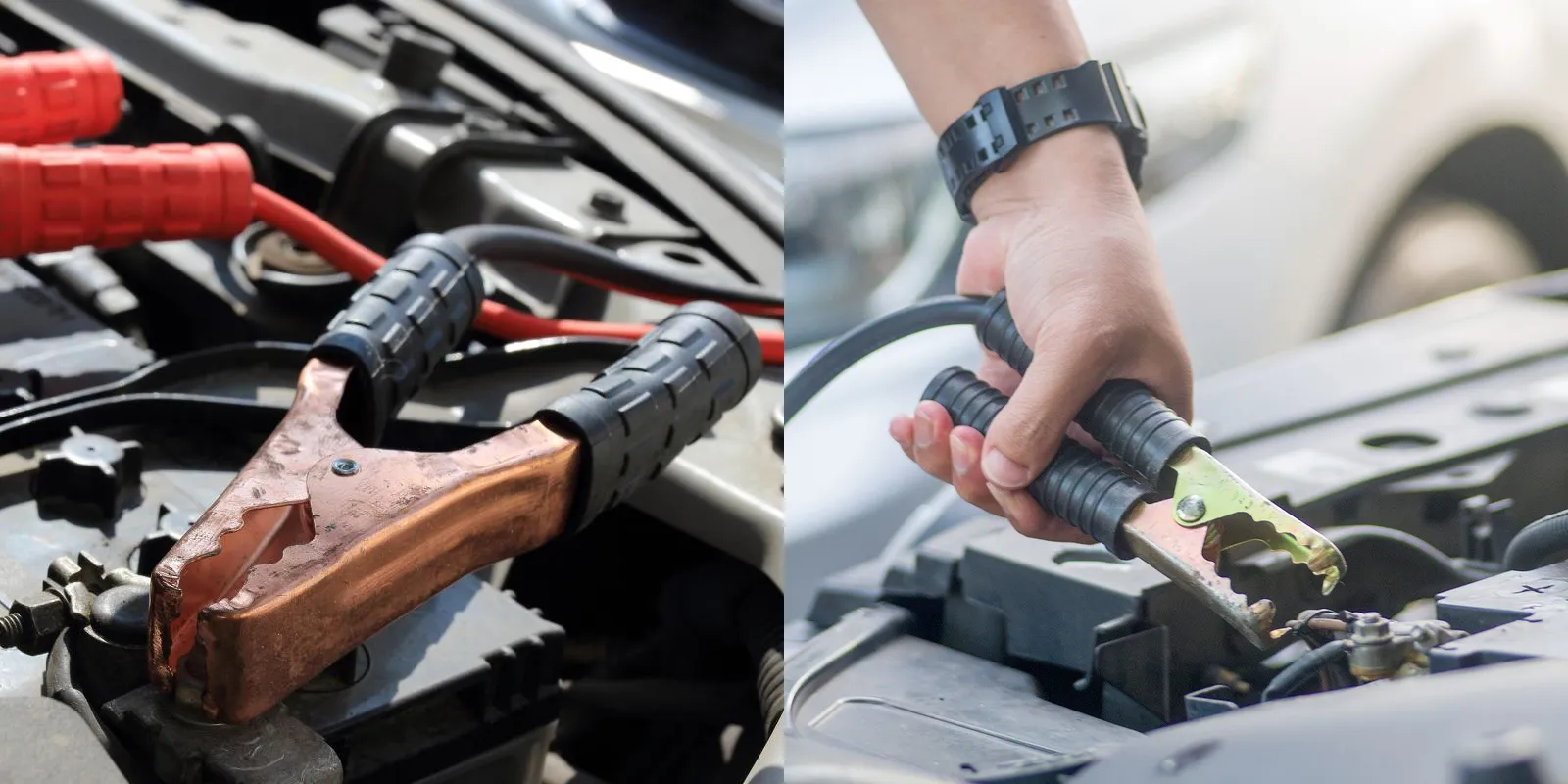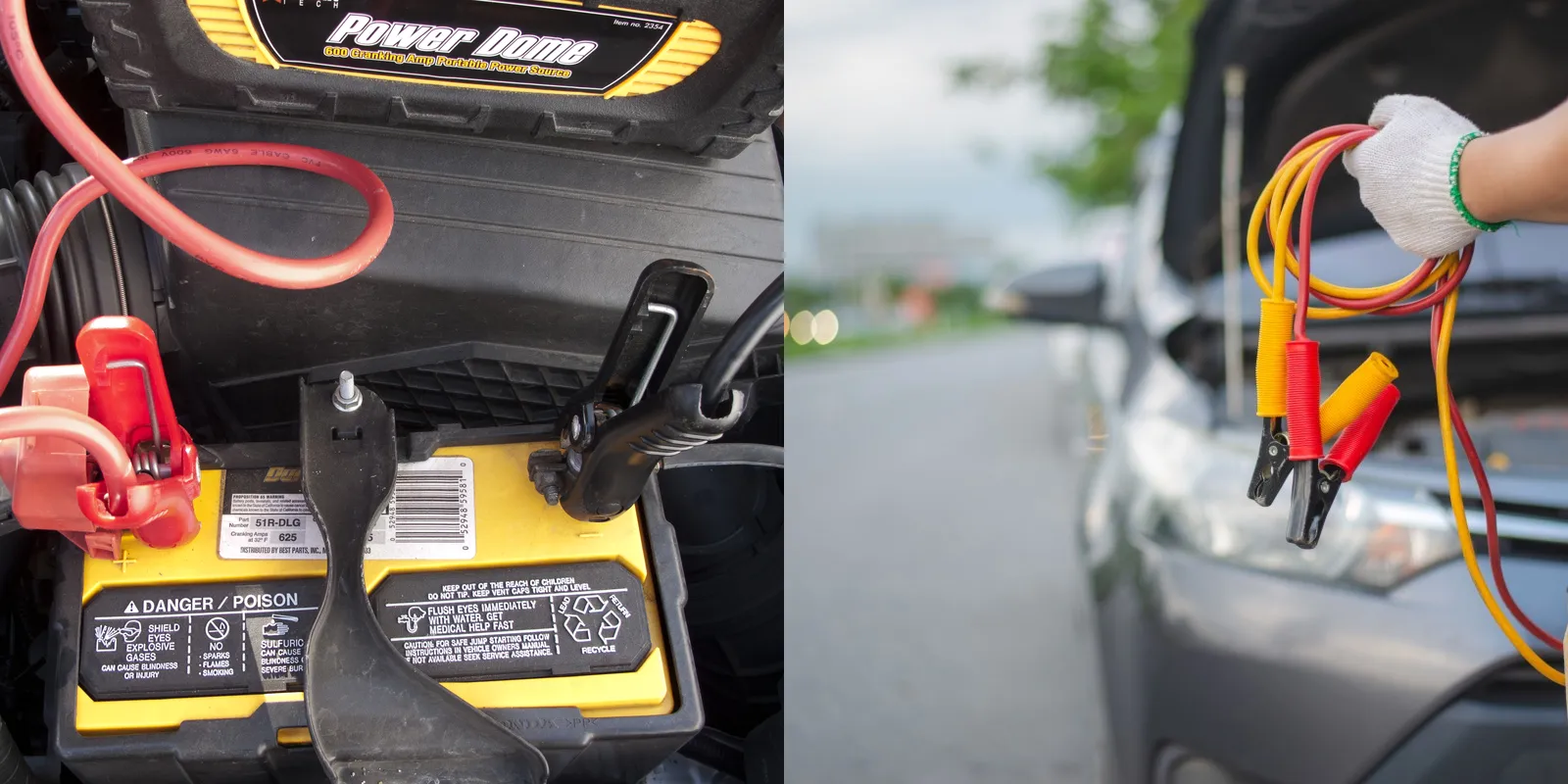La batteria scarica è un problema comune durante la guida e può essere fonte di grande frustrazione. Knowing how to jump start a car with cables can be a lifesaver. This guide will provide a step-by-step instruction on how to safely and effectively jump start a car with cables.
Brief overview of the jump starting process
Jump starting a car is the process of using a battery from another vehicle to start a car with a dead battery. This process is done by connecting the two batteries together with jumper cables, and then starting the donor car. The donor car will then provide the power to the dead battery, allowing the dead battery to start the car.
Avvia un'auto con i cavi: Preparazione
Gather the necessary tools
Before you can begin to jump start a car, you will need to gather the necessary tools. You will need a pair of jumper cables, another vehicle with a working battery, and a set of safety goggles.
- Jumper cables are necessary to complete the circuit between the two batteries, allowing power to be transferred from one battery to the other. Make sure the cables are in good condition, as frayed or corroded cables can be a safety hazard.
- You will need a second vehicle that is running, with a good battery, to provide the power necessary to jump start the dead battery. Make sure the second vehicle is running and that its battery is in good condition before you attempt to use it.
- Infine, you will need a set of safety goggles to protect your eyes from any sparks that may occur while you are connecting the cables. It is also a good idea to wear gloves and long-sleeved clothing to protect your skin from any sparks or acid that may splash onto you as you are connecting the cables.
Position the cars properly
It is important to position the cars properly before attempting to jump start a car with cables. The cars should be parked close together, but not touching. Make sure that the cars are put in park or neutral and that the ignitions are turned off. If the cars are too far apart, the cables will not reach. If the cars are too close, the battery cables may touch and cause a spark.
Avvia un'auto con i cavi: Connecting the Cables
Identify the positive and negative terminals on the batteries
Before you can jump start a car with cables, you must first identify the positive and negative terminals on the batteries of both vehicles. To identify the positive and negative terminals, look for the + (positivo) and – (negativo) symbols, or look for the color-coding on the terminals.
The positive terminal is usually marked with a red plastic cover or a + sign, while the negative terminal is typically marked with a black plastic cover or a – sign. If the battery does not have any markings, the positive terminal will typically have a slightly larger diameter than the negative terminal.
Connect the red cable to the positive terminal of the dead battery
When connecting the cables to jump start a car, the first step is to connect the red cable to the positive terminal of the dead battery. The positive terminal is usually marked with a “+” sign. It is important to make sure that the red cable is securely connected to the positive terminal. Altrimenti, it could cause sparks and even an explosion due to the build-up of gas.
Connect the other end of the red cable to the positive terminal of the working battery
Make sure the clamp is secured tightly around the terminal. The other end of the red cable should then be connected to the positive terminal of the dead battery. Ancora, ensure the clamp is firmly attached.
Connect the black cable to the negative terminal of the working battery
After the red cable is connected, the black cable can be attached. Ancora, the first end should be connected to the negative terminal of the working battery and the other end should be connected to the negative terminal of the dead battery.
Connect the other end of the black cable to a grounded metal surface on the dead car
Connect the other end of the black cable to a grounded metal surface on the dead car. It is important to make sure that the metal surface you are connecting to is unpainted, clean and free of dirt and debris. You can locate a good grounded surface on the dead car by opening the hood and looking for an unpainted metal tab or surface. Common locations are the negative terminal of the battery or a clean bolt or tab on the engine block near the battery.

Avvia un'auto con i cavi: Jump Starting the Car
Start the working car and let it run for a few minutes
Before you begin jump starting the car, it is important to start the working car and let it run for a few minutes. This will give the battery enough charge to help start the other car. Make sure the working car is in “Park” or “Neutral” and the parking brake is engaged. It’s a good idea to keep the working car running throughout the entire jump start process. Once the working car is running, open the hoods of both cars and locate the batteries.
Attempt to start the dead car
When you have the cables connected and the jump starting process has been set up, it’s time to attempt to start the dead car.
- Ensure the dead car’s ignition is off and the handbrake is engaged.
- Start the working car and let it idle for a few minutes. This will give the battery a chance to collect power from the working car.
- Try to start the dead car. Depending on the age of the battery and the length of time the car has been sitting, it may take a few tries.
- If the car doesn’t start right away, give it a few more tries. Se ancora non si avvia, you may need to try jump starting again, or you may need to replace the battery.
If the dead car does not start, try revving the engine of the working car
If your car doesn’t start, it’s probably because the battery is dead. Here are some tips for jumpstarting a car with cables:
- Primo, try revving the engine of the working car to get it started. This will give you a little more power and might start the engine in the dead car.
- If the engine won’t start, you may need to replace the battery or check for any leaks inside the car.
Avvia un'auto con i cavi: Disconnecting the Cables
Disconnect the cables in reverse order
When it comes to jump starting a car with cables, the most important part of the process is disconnecting the cables in the right order. This is because if you disconnect the cables in the wrong order, it can cause a spark which can damage the car’s electrical system. To ensure that this doesn’t happen, make sure to disconnect the cables in reverse order from when you connected them.
Start by disconnecting the red clamp from the positive terminal on the dead battery. Quindi, take the other red clamp and disconnect it from the positive terminal on the good battery. Infine, disconnect the black clamp from the negative terminal on the good battery. It’s also important to make sure that the cables don’t touch each other when you’re disconnecting them.
Once all of the cables have been disconnected, it’s important to store them properly in a secure location. Make sure to keep them away from the engine, exhaust, or other moving parts of the car. This will help ensure that the cables stay in good condition and are ready to be used again in the future.
Let the dead car run for a few minutes to recharge the battery
If you’re a new driver, it’s important to remember that in order to jump start your car, you need cables. Here are a few tips for getting started:
- Look for cables that come with the car. Some come already attached to the car, while others must be bought separately. If you buy the cable separately, make sure it is of good quality and has a long enough length.
- Make sure the cable is connected properly to the car’s battery. Be careful not to damage the wires or terminals if you don’t do this!3. Connect the cable to one end of the battery and the other end of the cable to your vehicle’s power outlet.
Conclusion Jump Start A Car With Cables
Summary of the jump starting process
Jump starting a car with cables requires a few simple steps. To begin, the jumper cables need to be connected to both the dead car and the car with the working battery. Once the cables are connected, the car with the working battery should be started, and then the dead car should be started as well.
After a few minutes, the dead car should be able to power itself and the cables should be disconnected. It is important to make sure that the cables are not touching each other and that the cars do not touch each other while the process is being done. If done properly, the dead car should be able to start and be ready to go.
Final thoughts on safety and precautions
Before attempting to jump start a car, it is important to remember the safety precautions and instructions for the process.
- Innanzitutto, make sure that all batteries are disconnected from the vehicle before attempting to jumpstart. It is also important to make sure that all tools used, such as cables, are in good condition and that the connections are secure.
- When connecting the cables, make sure that the positive and negative ends are attached to the correct terminals. If the terminals are covered, use a cloth or other material to uncover them. Inoltre, keep the cables away from any moving parts and make sure that the connections are not loose or damaged.
- It is also important to make sure that the vehicle being jumpstarted is in a safe location. If the vehicle is located near a road, make sure that all other vehicles are a safe distance away. Inoltre, make sure that the area is free of any standing water, as this can cause a short circuit.
- Infine, it is important to be aware of the risks associated with jumpstarting a car. It can be dangerous if performed incorrectly, so it is important to use caution and follow the instructions. If any doubts arise, it is best to leave it to a professional.
La fine
With these steps, jump starting a car with cables can be done quickly and easily. Remember to always exercise caution and safety when attempting to jump start a car, and if in doubt, contact a professional. With the right tools and knowledge, any driver can now jump start their car without having to call for help.
